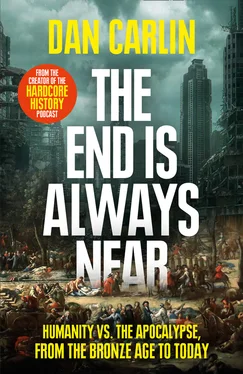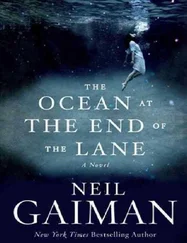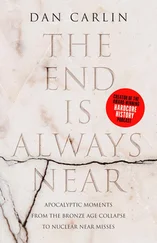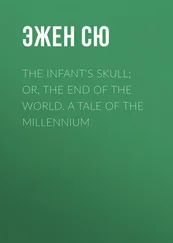It’s possible that’s how it was with the so-called sea peoples.
The sea peoples were public enemy number one in what might be termed the “invasion theory.” In the mid-twentieth century, it was popular to portray the urban “civilized” world of the Bronze Age as an oasis of development ringed by a sea of antagonistic barbarism. There was an osmosis-like dynamic that kept attracting the hardscrabble tribal types on the outside to the rich (but perhaps soft) “civilized” peoples. That human sea was kept at bay only through great effort. At times, the barbarian tribes would break through and overwhelm a given city, region, or even state.
In this view, the crisis at the end of the Bronze Age was akin to a perfect storm that set in motion many of these outsider peoples, creating a “time of troubles” led by fierce tribal warriors who overwhelmed all but the strongest of political entities.
As the historian Chester G. Starr wrote in 1965:
The [Bronze Age] monarchs failed until too late to notice that new waves of invasion were mounting. From the desert Semitic tribes lapped against the strongpoints of the cities; from the north a terrific assault broke forth in the late thirteenth century. Ugarit was burned and destroyed forever, as were many other Syrian centers; the Hittite realm vanished from the map shortly after 1200, as did also the Mycenaean kingdoms in Greece. Egypt, attacked by land and sea under Ramesses III (1182–51), barely rode out the storm. So too Assyria survived, but lost any capabilities of expansion for the next few centuries.
Several other once popular hypotheses could also be wrapped into the invasion theory. For example, the idea that much of the calamity from this era can be attributed to the discovery and wide use (among some) of iron fits nicely into any idea that warfare was a prime component of the Bronze Age catastrophe. Many once thought that iron was the secret superweapon of the ancient world in this age, and that once some peoples acquired the ability and know-how to produce it, they gained a huge advantage militarily over their enemies. People who had this capability (such as the Hittites) were said to jealously guard the secret of its manufacture.
This idea is much less popular than it once was, but it has evolved somewhat and now forms a component in other theories relating to, for example, the collapse of regional trade. The exchange among developed states in copper and tin was a key pillar of the economy in the interconnected Mediterranean Bronze Age.[20] Few places had both those metals, so trade was vital and lucrative. Iron’s main value had less to do with its hardness than with its abundance.[21] If it was cheaper to outfit soldiers with iron weapons than bronze ones, that certainly would have had military implications. If it severely damaged the economies of the major trading states, that would have had ripple effects as well.[22]
Then there are the last two elements at play here that may fall under the “sea peoples and friends” category—piracy and human migration. These also overlap with the next potential suspects on the list.
Let’s start with piracy. Whether it’s the Egyptians talking about “northerners in their isles,” or written correspondence from the coasts of the Levant, there’s a general feeling about the late stages of the Bronze Age (and what happened in the famed “Viking Age,” from about 700 to 1100 CE) that periodic outbreaks of large-scale piracy were not an unusual historical occurrence. In addition to the raiding of coastal settlements and the burning of villages, towns, and even major cities, the taking of ships and cargoes at sea could wreak havoc on the all-important Mediterranean maritime trading network. A small amount of piracy in this region was no doubt normal,[23] but if conditions fostered an explosion in the number of seagoing bandits, it could be system threatening. The sea peoples were once blamed for the majority of pirate activity, but unearthed records have shown that in at least some cases the pirates may have been from the same city-state as their victims, a case perhaps of turning to piracy when economic conditions deteriorated.
But pirates are hit-and-run entities, and some of these humans may have wanted to move en masse to the more advanced or wealthy states permanently. The idea of a Bronze Age version of the Germanic Völkerwanderung [24] (essentially, a migration), disrupting the equilibrium and setting in motion the collapse of the age, has been around for a long time. The Egyptian inscriptions depict families in wagons accompanying some of the “sea people” and Libyan tribes. The implication is that whole peoples were looking for new places to settle, and they were willing to conquer new lands with the sword if need be. The Egyptians were somewhat used to this, as they occupied a comparatively rich breadbasket in their region; Libyan peoples from the west, Nubian people from the south, and all manner of “Asiatics”[25] were often trying to gain entrance to raid or settle. It can be hard to draw a fine line between human migration and invasion in some of these cases.
The invasion theory assumes that this late Bronze Age outbreak of barbarian violence was a somewhat widespread phenomenon, perhaps one involving differing groups of peoples from the Balkans to the edge of China, and occurring at roughly close to the same time.
The theory is less popular today, if for no other reason than some of the invasions offered as evidence are now more doubted. Did the “Dorians” invade and conquer Greece as part of this calamity? Eighty years ago, a majority of historians would have likely thought so and would have blamed those invasions for plunging Greece into a dark age. Today, fewer historians believe those “invasions” ever happened. If multiple invasions didn’t happen—if, instead, warfare and raiding were more piecemeal and less widespread—it becomes tougher to blame them for bringing the entire system down. Some historians have even suggested they may be a historical myth.
While there are still big supporters of the idea that the peoples of the sea were of pivotal importance to the end of the Bronze Age, they are perhaps seen by most these days as more of an effect than a cause. The migrations, piracy, and even invasions may have been a response to something else …
Suspect #2: Famine/Climate Change/Drought
The Four Horsemen of the Apocalypse are commonly given the names Conquest (or Pestilence), War, Famine, and Death. In much of the modern world, the horsemen don’t seem as scary as they used to. War and conquest are still around, of course, but no World War III (yet). We are no longer able to relate to what our forebears went through with disease (pestilence).[26] And mass, society-wide famine is almost unheard of in most of the world. It seems like much of the darkness that humankind lived with from time immemorial has been banished from our future.
But it’s never wise to bet against any of the Four Horsemen long term. Their historical track record is horrifyingly good.
One of the things most of us take for granted is our access to food. There are malnourished and hungry individuals in every nation on earth, but times when food is scarce for whole societies is much, much rarer in most of the world than it’s ever been. Mass food insecurity was more the norm than the exception up until very recently, though. It’s only because of relatively recent changes that enough food can be produced to support our current population levels. Our modern delivery and logistics systems allow large amounts of food to be reliably shipped and to stock the shelves of even distant islands. When scenes of the ravages of modern famine appear on television charity ads, the reality displayed on camera is almost incomprehensible to most of us. But try feeding three hundred million people in the United States today with the farming technology of even two hundred years ago.
Читать дальше











